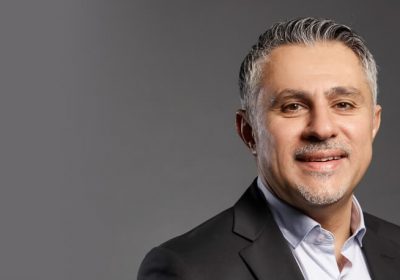
- Author: Nina Hendy
- Posted: June 22, 2021
Sally Bruce: The Buck Stops with the CFO when Closing the Gender Pay Gap
Rather than step over the problem of pay inequality between the sexes, CFOs should be tackling the issue head on, says Culture AMP’s CFO and COO, Sally Bruce.
Currently, Australia’s national gender pay gap stands at 13.4 per cent. It is a demoralising statistic for anyone that is complex and often confusing to resolve.
But the CFO and COO homegrown technology unicorn Culture AMP, Sally Bruce, says the key is not to overthink it and instead to simply take responsibility for resolving it.
The fact is that CFOs hold the power to closing the gender pay gap. “I’ve stepped into a couple of roles now where there has been pay inequality. It’s thought to be a much harder problem to solve than it actually is,” Bruce says, who landed at market leading culture analytics platform in August last year.
It takes no more than two pay cycles to sort a gender pay gap out in the workplace. “That way we as CFOs can say with hand on our hearts, that there is absolute pay equality. I would not sit in a leadership role and have pay inequality in any form,” she says.
You don’t need a magic pot of money to fix the issue. You simply need to make choices and set priorities. Everyone sits around and waits for the organisation to address a gender pay gap, but not all organisations will prioritise it,” she says.
“It’s also about understanding how the gap gets exacerbated by people who take career breaks, then miss subsequent pay increases. Prioritising these people first to ensure there is pay equality is crucial. And then, ensure that you are only rewarding people for exceptional performance.”
Career trajectory
Big banking was the chosen career path for Bruce for many years. She was the CFO of business and personal banking for NAB (among other roles) for six years and spent four years as the CEO at AMP Bank.
She was ready for a change. “I wanted something that had leadership influence over people, so I could positively impact their lives. I love fast growing companies and I love positive disruption.”
During Covid-19 lockdown in Melbourne, Bruce just happened to introduce her to the CEO and founder of Culture AMP, none other than the formidable Didier Elzinga.
During a Melbourne lockdown, Bruce and Elzinga began walking and talking in their permitted hour of exercise in a meet and greet that led to Bruce accepting a role in August last year.
Like so many Victorians, she’s barely seen inside the Richmond office, and is still yet to meet most of her team. It hasn’t been all bad. She travelled a lot in previous roles, so the chance get her feet under the desk and spend time with her teenage daughters has been a bonus.
Lessons in leadership
Culture AMP has a company isn’t siloed by geography, with 503 employees working for the company right now. Culture AMP revealed that it needed to shed jobs last year, but better market conditions this year has sent it on a hiring spree.
Bruce has her work cut out for her in a company that’s going to achieve more than 50 per cent revenue growth and 300 people to its workforce this year. And while the company with ‘culture’ in its name obviously takes its own culture very seriously, fostering culture over video calls has been a challenge.
“It’s been interesting building rapport over a Zoom call. I miss all the contextual cues that you have in an office, face-to-face. To my mind, I’m very conscious that the process of learning about a person takes much longer,” she says.
She admits to becoming a case study for the Culture AMP software that can bolster employee retention rates, populating how she’s feeling. Which was optimistic, despite the challenges of lockdowns.
But it has been impossible to try and pick star performers within an organisation this past year without context,” she says.
Employees could be home schooling six-year-old twins, or live in a one-bedroom flat, or be home-schooling – which could impact their output at work dramatically, she says.
“We took the view that because of this, we were going to be very even-handed around what performance was. And reward everyone with a view that they had six months of development and learning, to create fairness.”
True to its word, Culture AMP introduced wellbeing days, meeting-free weeks and lip-synching social events via Zoom in a gentle approach that will no doubt improve employee retention rates in a tight labour market amid ongoing border closures that prevents skills from simply being shipped in from overseas.
What keeps tech companies ahead of the pack is their acceptance that nothing ever stays the same. Continual tech iterations as the company evolves and morphs into new shapes is all part of the job, she says. “One of the great things that happened here the continual recognition that our solutions have come to end of life, because we’ve outgrown them. We are always looking at what the next iteration would be.
“And you can’t build a couple of iterations out. It doesn’t work like that, because growth happens quickly, and you never really know in which direction it will occur. You can’t anticipate what three iterations out will look like. You’re better to solve the next iteration and do that elegantly because it ceases to make sense for you.”
Rising to the top
As a board member and Victorian chapter chair of Chief Executive Women, Bruce is used to lifting up other women around her. The organisation also informs government about better understanding the structural issues impacting women’s issues at work, such as the current childcare system.
Another statistic that alarms Bruce is the proportion of female CFOs. While it has increased from 9 per cent in 2017 to 16 per cent this year, it’s too little, too late.
Bruce says: “I actually think the number of female CFOs we have is incredibly disappointing, especially when you consider that the most likely pathway to CEO is via the CFO role.”
She describes her own finance team as incredibly diverse and filled with women, people of colour and with different beliefs and backgrounds. “I find in other areas I’ve worked, you don’t have that beautiful spectrum of diversity,” she says.
“We know the systems don’t naturally bubble up people who represent minorities or who are women. So making conscious steps to build the careers of these people is incredibly important as a leader,” she says.
The key is more role models. “But to get these women in these roles, we have to see them with the commercial experience. We need to see more women coming through the ranks and demonstrate that they have the clear ability to lead.”
Read more about closing the gender pay gap in your organisation here.








